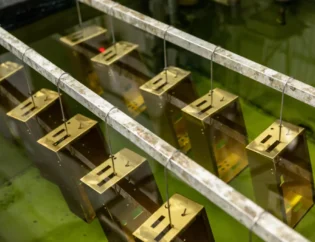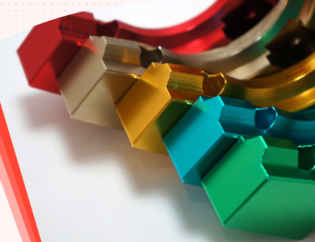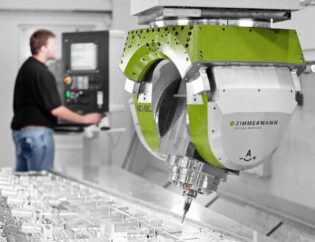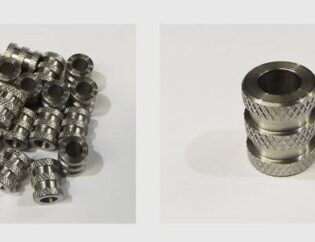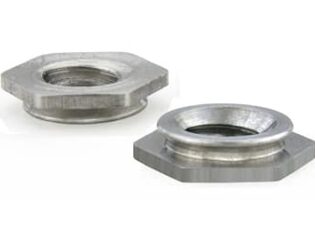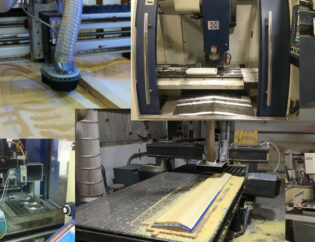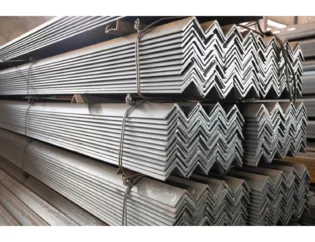Carbon fiber PETG is revolutionizing the world of 3D printing, combining the strength of carbon fiber with the versatility of PETG. This innovative material offers enhanced durability and rigidity, making it ideal for a variety of applications, from functional prototypes to end-use parts. Understanding its properties and benefits is essential for anyone looking to elevate their 3D printing projects.
In this guide, readers will explore the unique characteristics of carbon fiber PETG, including its mechanical properties and processing techniques. We will delve into the advantages it offers over traditional materials, such as improved strength-to-weight ratios and resistance to impact. Additionally, we will cover best practices for printing with this composite material to achieve optimal results.
By the end of this guide, readers will be equipped with the knowledge to effectively utilize carbon fiber PETG in their projects. Whether you are a hobbyist or a professional, mastering this material can significantly enhance your 3D printing capabilities. Join us as we uncover the potential of carbon fiber PETG and how it can transform your creations.
Comprehensive Guide to Carbon Fiber PETG Filament
Carbon fiber PETG is a revolutionary material that combines the strength of carbon fiber with the versatility of PETG (Polyethylene Terephthalate Glycol). This composite filament is gaining popularity in the 3D printing community for its unique properties, making it suitable for a wide range of applications, from functional prototypes to lightweight parts in aerospace and automotive industries. In this guide, we will explore the technical features, types, and benefits of carbon fiber PETG, along with practical tips for successful printing.
Introduction
As you might know by now, carbon fiber is infused with various kinds of filaments in various proportions to make a stronger version of that filament. PETG, a glycol-modified version of Polyethylene Terephthalate (PET), commonly used to manufacture water bottles, is a semi-rigid material with good impact resistance. When such a material is infused with carbon fiber to form carbon fiber PETG, the resulting filament is used in the production of lightweight but rigid parts and functional prototypes. Typically, it is used in making parts for aerospace, civil engineering, the military, and motorsports.
In this article, we will delve into carbon fiber PETG to find out what makes this filament so capable of all the applications mentioned above, what tips you can use to 3D print it, some of the best brands for carbon fiber PETG, and much more.
Technical Features of Carbon Fiber PETG
Carbon fiber PETG offers a unique blend of properties that make it an excellent choice for various applications. Below is a comparison table highlighting its technical features:
| Feature | Description |
|---|---|
| Material Type | Composite of PETG and carbon fiber |
| Strength | High tensile strength and impact resistance |
| Weight | Lightweight compared to traditional materials |
| Thermal Resistance | Good thermal stability, suitable for high-temperature applications |
| Printability | Easy to print with minimal warping and excellent layer adhesion |
| Abrasiveness | More abrasive than standard PETG, requiring hardened nozzles |
| Moisture Resistance | Resistant to moisture, enhancing durability |
| Surface Finish | Typically has a matte finish with a textured appearance |
Types of Carbon Fiber PETG Filaments
There are several brands and formulations of carbon fiber PETG available in the market, each with its unique characteristics. Below is a comparison table of some popular types:
| Brand/Type | Key Features |
|---|---|
| Pro Series by Matterhackers | High dimensional accuracy, low shrinkage, and excellent layer bonding |
| CARBONX PETG+CF | High modulus, excellent surface quality, and low moisture absorption |
| Carbon Fiber Extreme Black PETG | Deep black color, non-brittle, and suitable for professional prints |
| Carbon Fiber PETG by 3D4Makers | Increased impact resistance, greater dimensional stability, and easy to print |
| PETG-CF by Bambu Lab | High strength, glossy finish, and broad compatibility with 3D printers |
Benefits of Using Carbon Fiber PETG
-
Enhanced Strength: The infusion of carbon fiber significantly increases the strength of PETG, making it ideal for functional parts that require durability.
-
Lightweight: Carbon fiber PETG is much lighter than traditional materials, which is crucial in applications like aerospace and automotive where weight reduction is essential.
-
Easy to Print: Compared to other carbon fiber composites, carbon fiber PETG is easier to print, with less warping and better layer adhesion.
-
Versatile Applications: This filament can be used for a variety of applications, including prototypes, tools, and parts for drones and automotive components.
-
Aesthetic Appeal: The unique finish of carbon fiber PETG adds a professional look to printed parts, making them suitable for display and functional use.
Tips for Successful Printing with Carbon Fiber PETG
To achieve the best results when printing with carbon fiber PETG, consider the following tips:
– Use a Hardened Nozzle: Due to its abrasiveness, a hardened steel nozzle is recommended to prevent wear and tear on your printer.
– Optimize Print Settings: Adjust your printer settings to accommodate the specific requirements of carbon fiber PETG, such as temperature and speed.
– Ensure Proper Bed Adhesion: Use a heated bed and suitable surface (like glass or PEI) to improve first-layer adhesion and reduce warping.
– Calibrate Retraction Settings: Proper retraction settings can help minimize stringing and improve print quality.
– Dry Your Filament: Store your filament with desiccants to prevent moisture absorption, which can affect print quality.
Conclusion
Carbon fiber PETG is a game-changer in the world of 3D printing, offering a unique combination of strength, lightweight properties, and ease of use. Whether you are a hobbyist or a professional, understanding the features and benefits of this filament can help you make informed decisions for your projects. With the right settings and techniques, you can harness the full potential of carbon fiber PETG to create high-quality, durable prints.
FAQs
1. What is carbon fiber PETG?
Carbon fiber PETG is a composite filament made by infusing carbon fiber into PETG, enhancing its strength and durability while maintaining its lightweight properties.
2. Can I use a standard nozzle for printing carbon fiber PETG?
No, it is recommended to use a hardened steel nozzle due to the abrasiveness of carbon fiber, which can wear out standard nozzles quickly.
3. What are the ideal printing temperatures for carbon fiber PETG?
The recommended printing temperature for carbon fiber PETG typically ranges from 230°C to 260°C, depending on the specific brand and formulation.
4. Is carbon fiber PETG suitable for outdoor use?
Yes, carbon fiber PETG is moisture-resistant and UV resistant, making it suitable for outdoor applications.
5. Where can I buy carbon fiber PETG filament?
You can find carbon fiber PETG filament on various websites, including pick3dprinter.com, bambulab.com, all3dp.com, us.store.bambulab.com, and flashforge.com.

